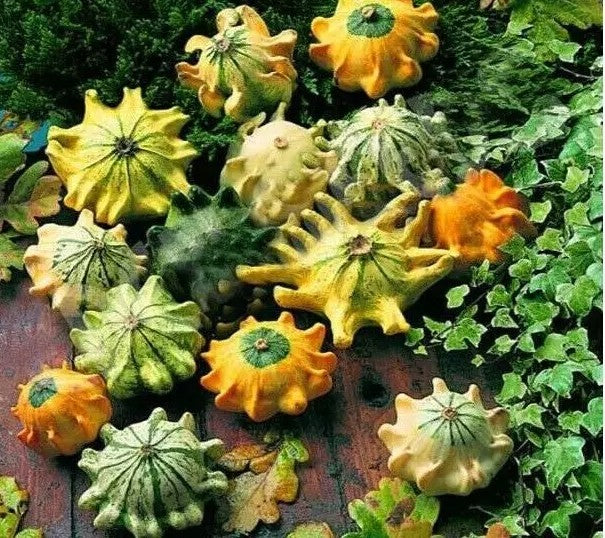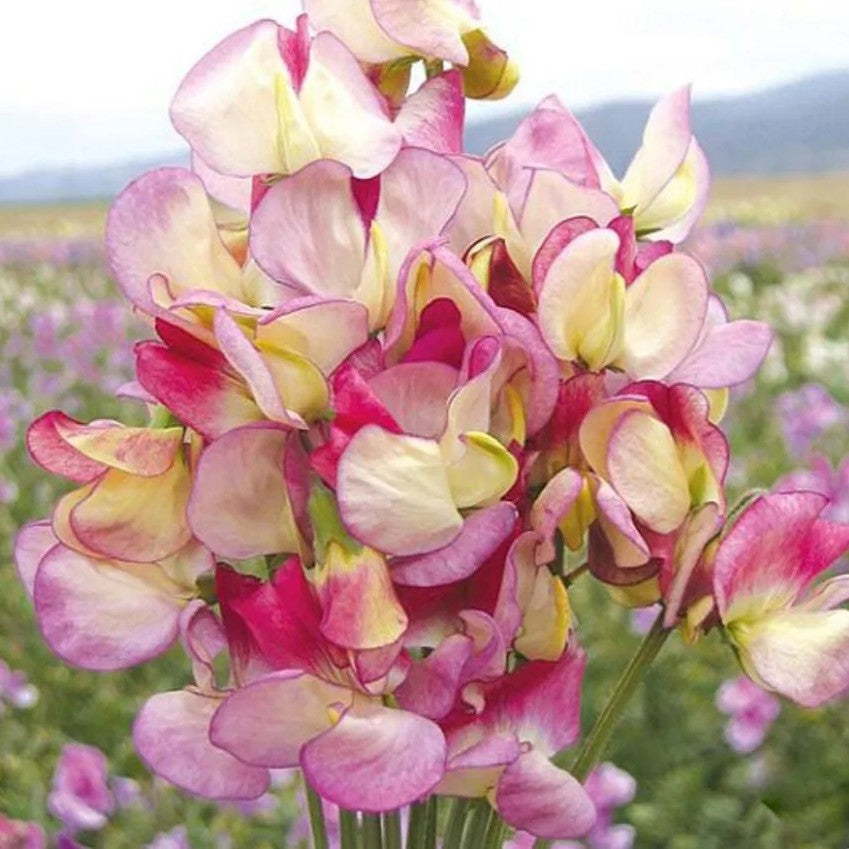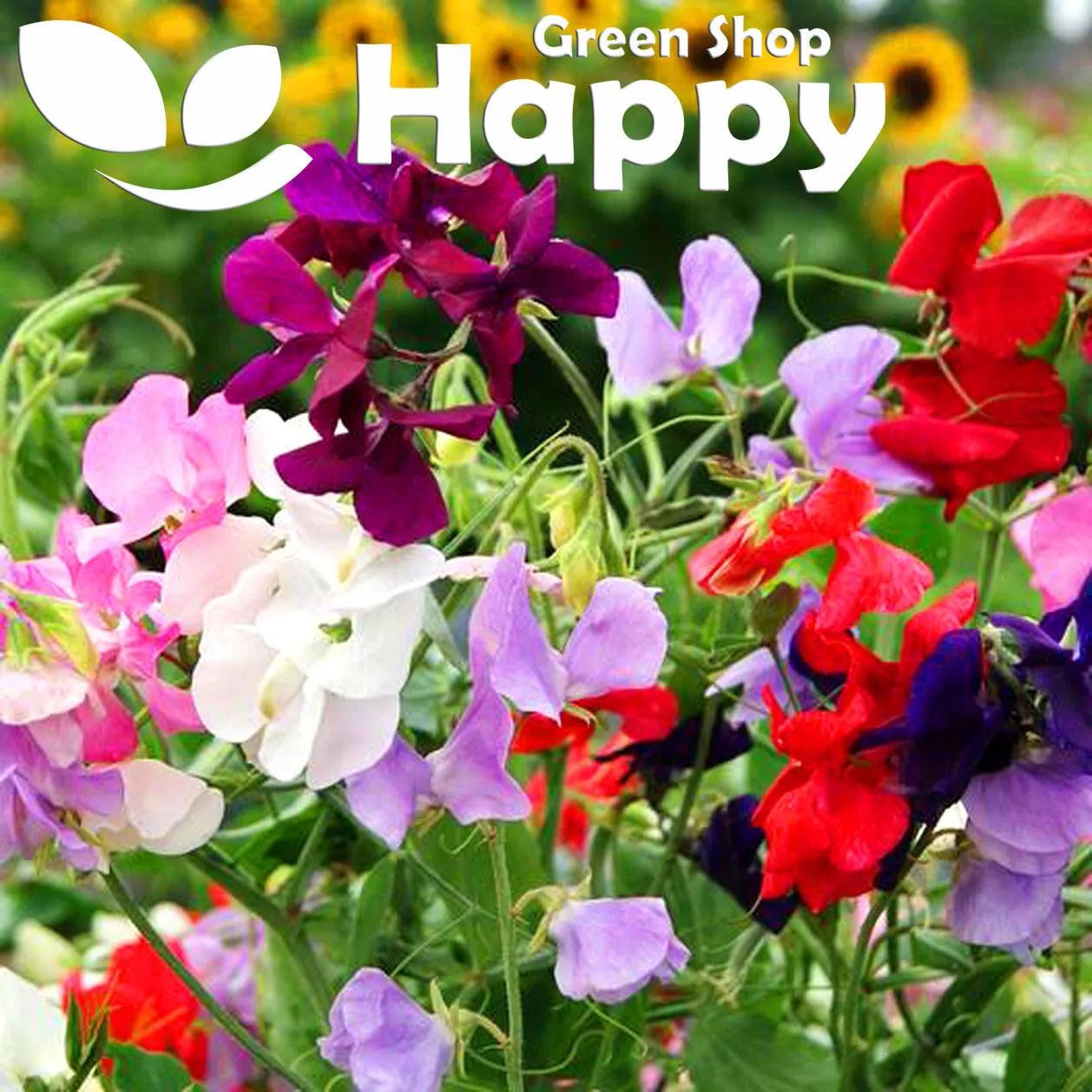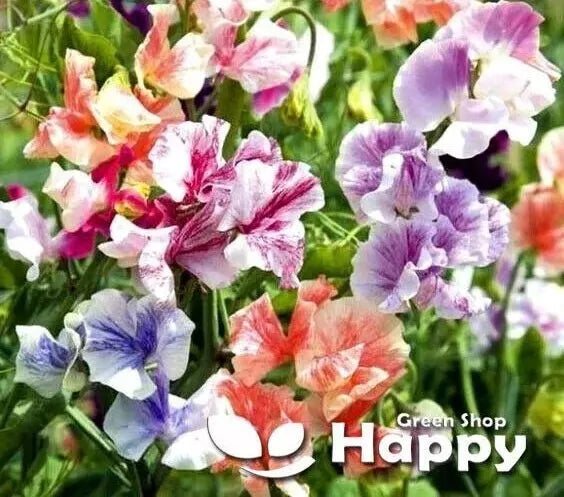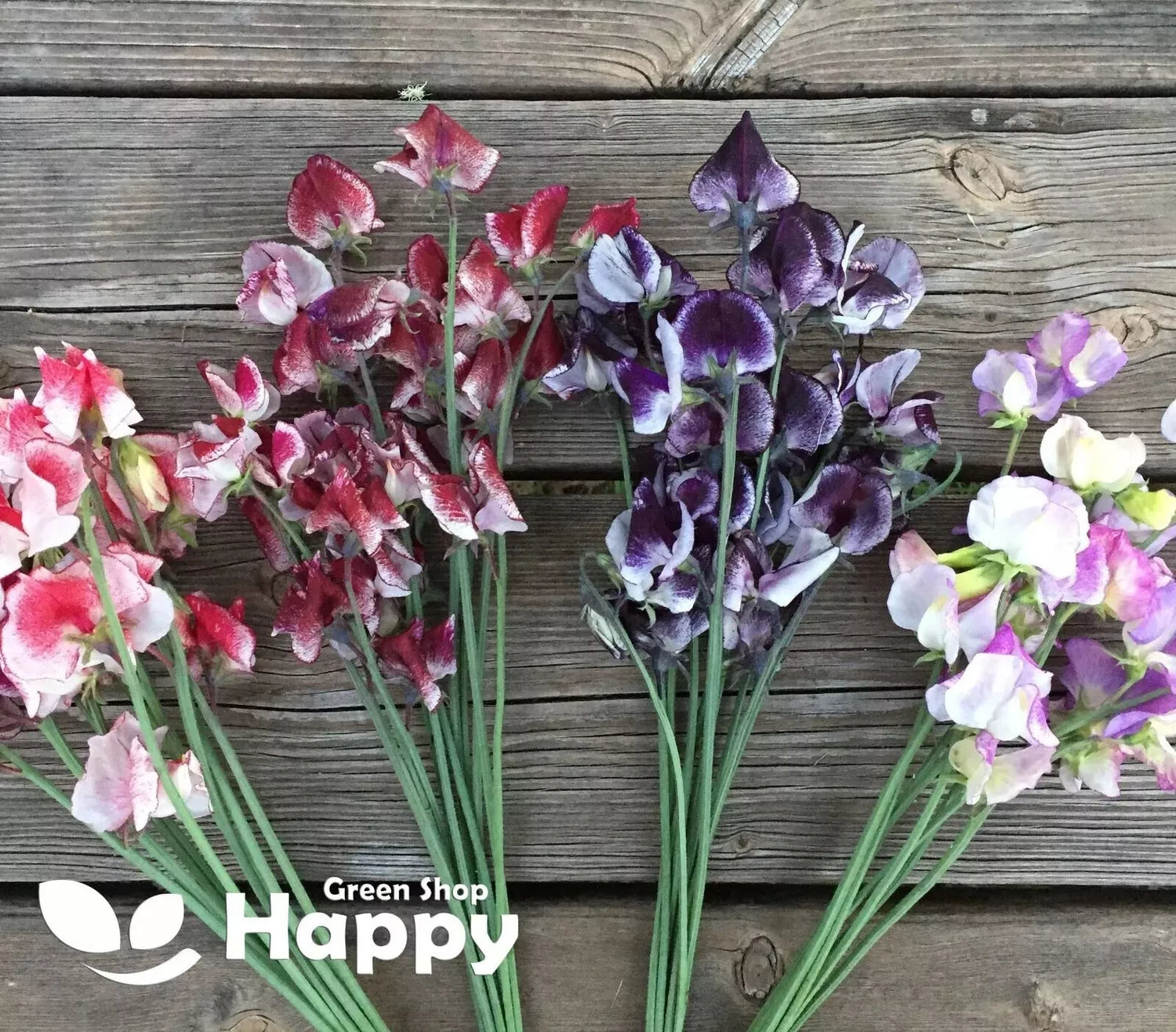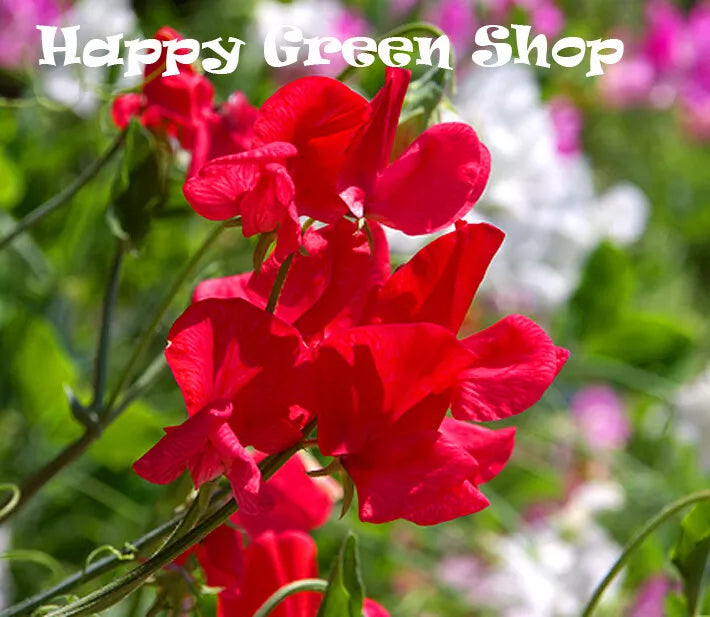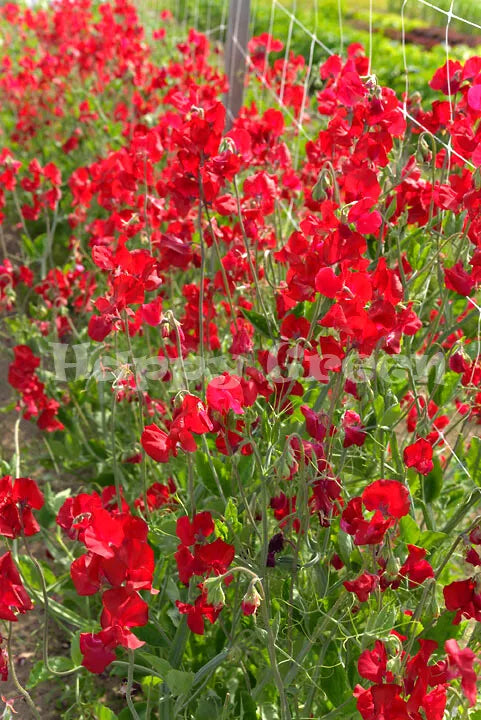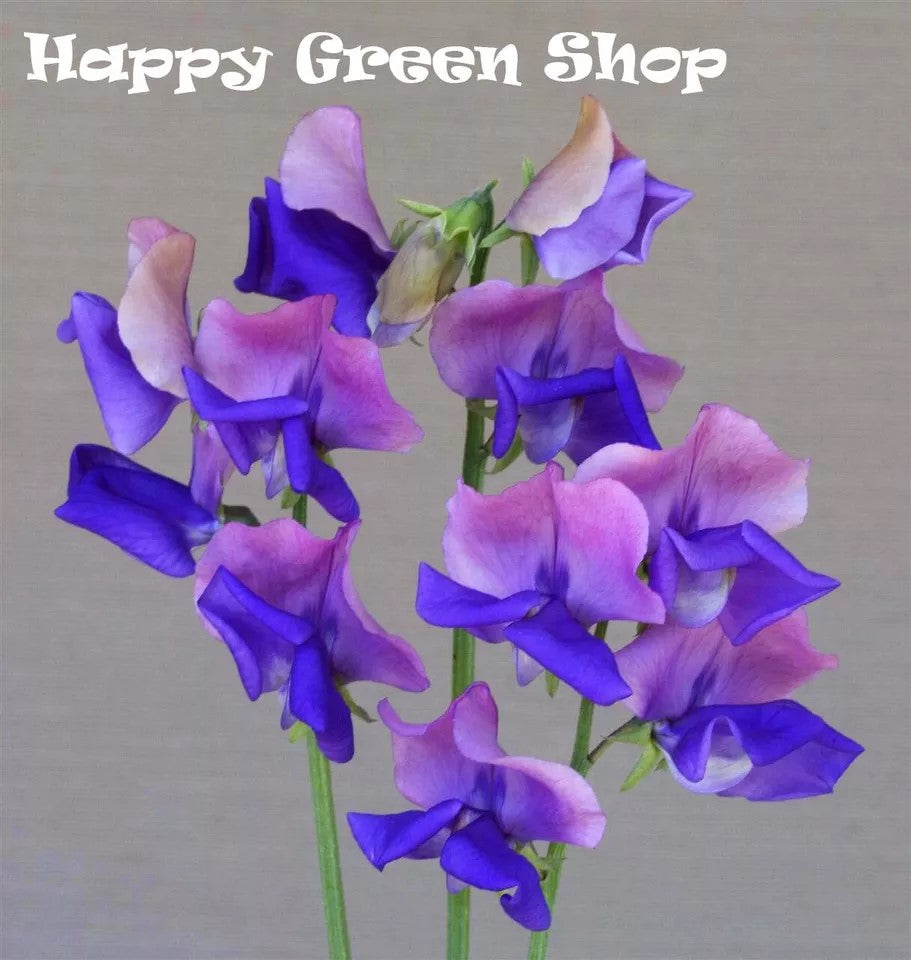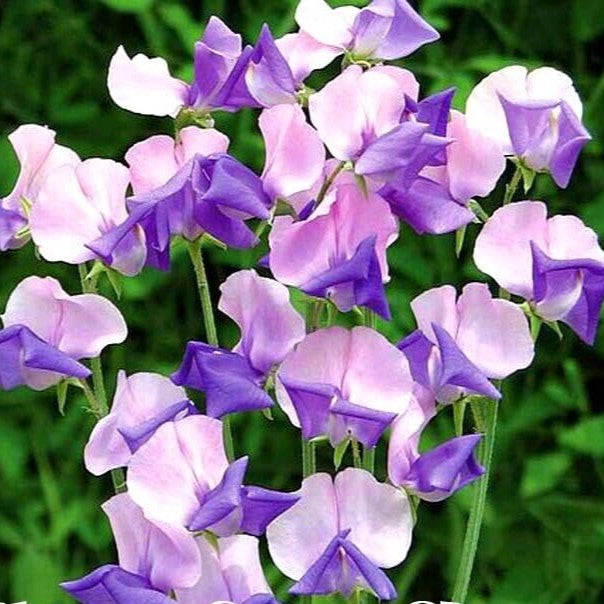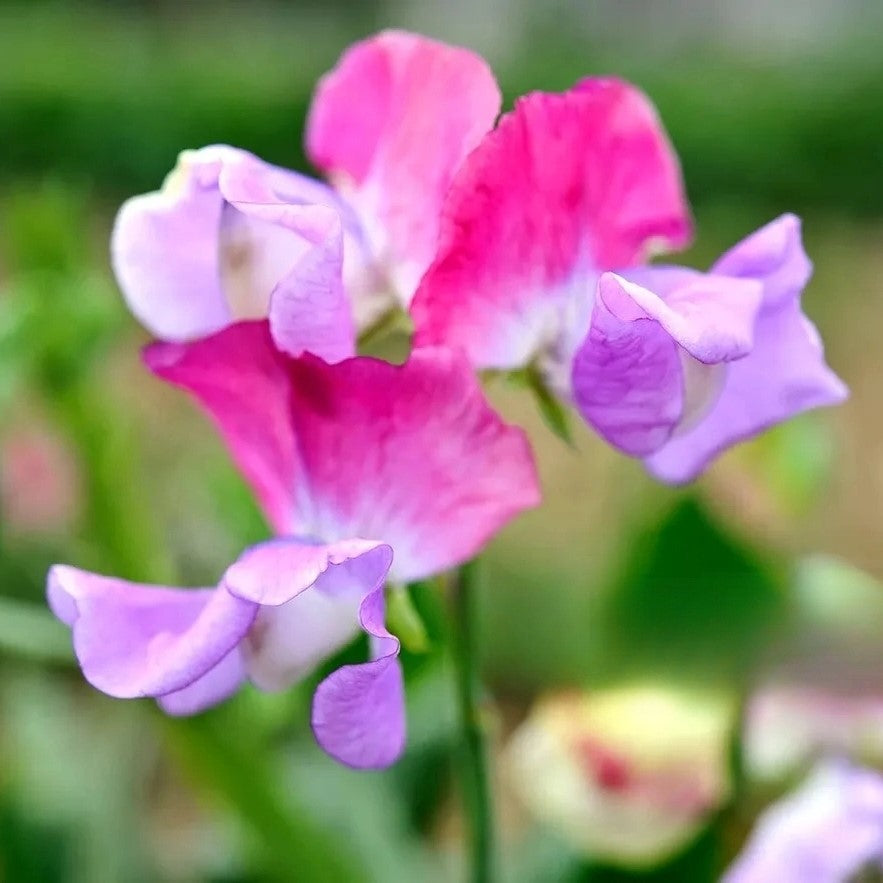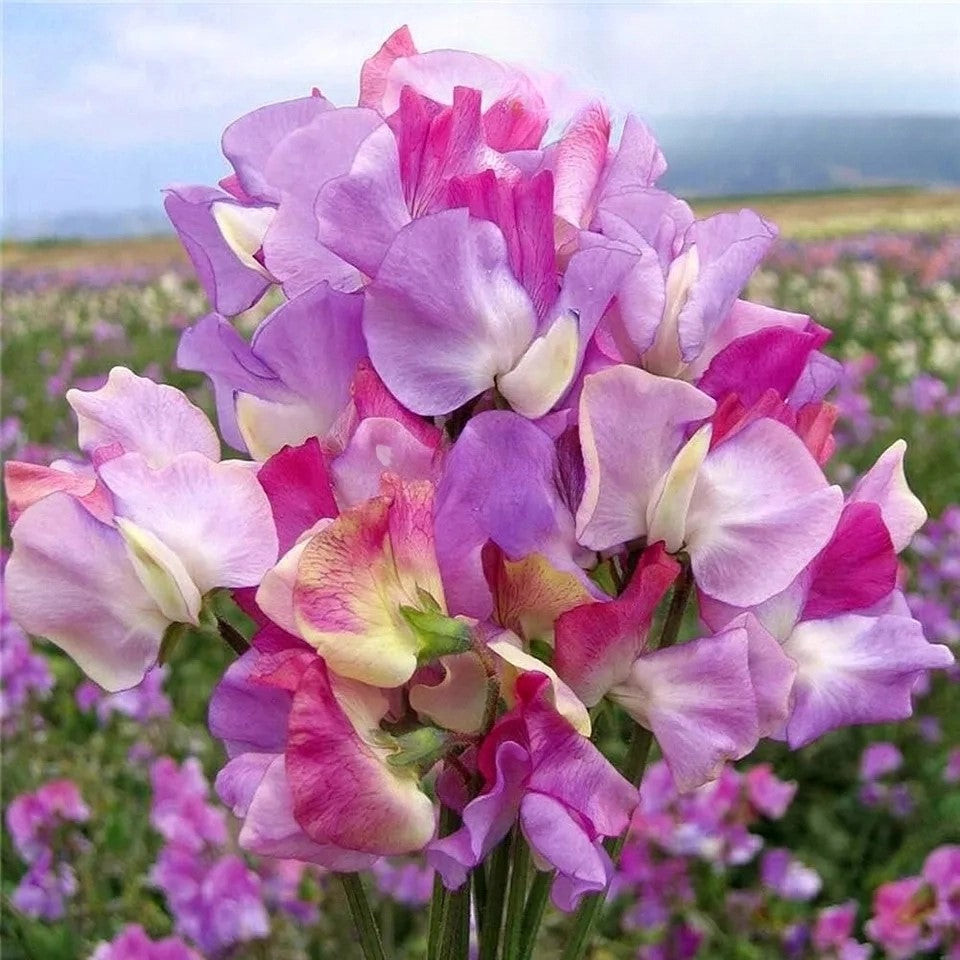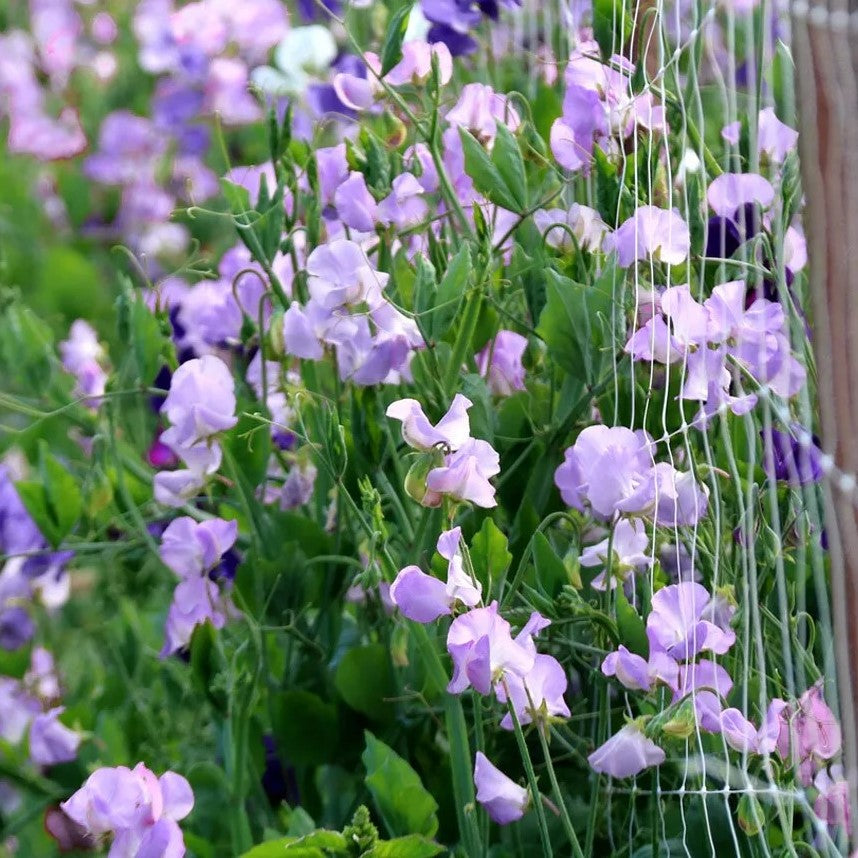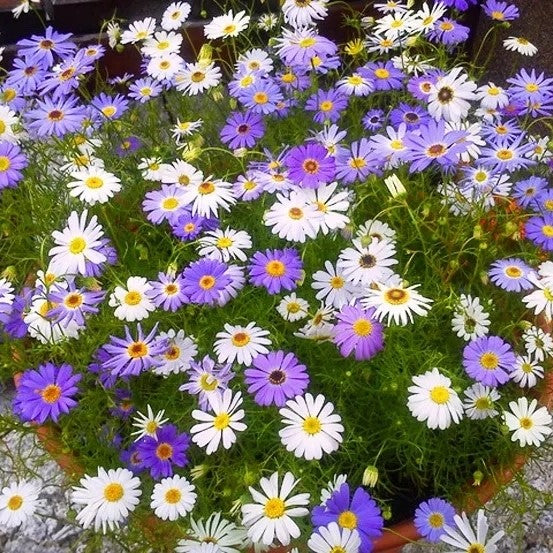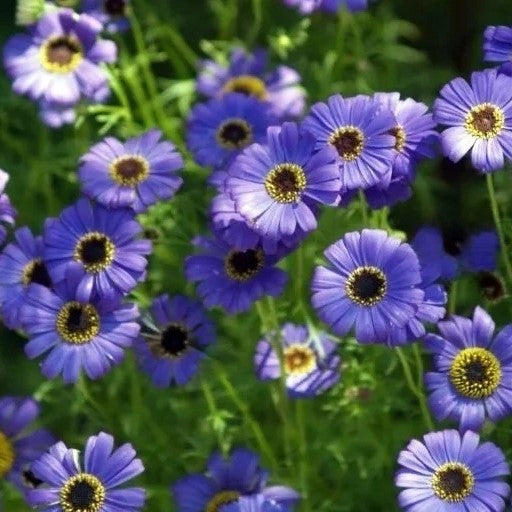Sort by:
351 products
351 products
Sweet Pea ‘Spanish Dancer’ Seeds (Lathyrus odoratus)
Add elegance and fragrance to your garden with Sweet Pea ‘Spanish Dancer’ (Lathyrus odoratus). This climbing annual produces exquisite, vibrant pink flowers with a striking magenta edge and a delightful scent. Ideal for trellises, fences, and pergolas, it’s a stunning addition for borders, containers, and cut flower arrangements.
How to Grow
-
Sow seeds indoors in late winter or early spring, or directly outdoors after the last frost.
-
Soak seeds overnight to improve germination.
-
Use well-drained soil in a sunny location.
-
Cover seeds lightly with soil and keep moist until germination (10–14 days).
-
Provide support such as trellises, fences, or netting for climbing.
-
Pinch out the tips of young plants to encourage bushier growth and more blooms.
Key Features
-
Vibrant pink flowers with magenta edges
-
Fragrant, climbing annual perfect for vertical displays
-
Long-flowering, from late spring through summer
-
Excellent for cut flowers and bouquets
-
Attracts pollinators such as bees and butterflies
Ideal For
-
Trellises, pergolas, fences, and arches
-
Flower borders and cottage gardens
-
Containers and patio planters with support
-
Cut flower arrangements for home decoration
Sowing
-
Best time: Late winter to early spring indoors, or after frost outdoors
-
Germination: 10–14 days
-
Pre-soak seeds for best results
-
Prefers full sun and well-drained soil
Quick Tip
-
Regularly remove spent flowers to prolong blooming and maintain vigorous growth.
Sweet Pea ‘Royal Dreams’ Mix – Fragrant Elegance
Sweet Pea ‘Royal Dreams’ Mix offers tall, climbing vines adorned with richly colored, fragrant blooms. A classic favorite for trellises, fences, and cut flowers.
What Makes It Special
-
Beautifully fragrant flowers
-
Rich, regal color mix
-
Vigorous climbing habit
-
Excellent for cutting and bouquets
Key Features
-
Annual climber
-
Grows up to 180–200 cm tall with support
-
Blooms in summer through early autumn
-
Thrives in full sun and fertile, well-drained soil
-
Attracts bees and butterflies
Ideal For
-
Trellises, fences, and arches
-
Cottage and wildlife gardens
-
Cut flower arrangements
-
Adding fragrance and color to outdoor spaces
Sowing
-
Sow indoors 6–8 weeks before last frost or directly outdoors in spring
-
Soak seeds overnight for better germination
-
Plant 2–3 cm deep
-
Germination: 10–14 days at 15–18°C
-
Space 15–20 cm apart; provide support for climbing
Sweet Pea 'Ripple' Mixed – Seeds
(Lathyrus odoratus)
Sweet Pea 'Ripple' Mixed is a delightful climbing annual featuring a mix of soft pastel blooms in pinks, creams, and lavenders with a sweet, intoxicating fragrance. Its long, sturdy stems are ideal for cutting, while its vigorous climbing habit makes it perfect for trellises, fences, and arches. A must-have for adding vertical interest, colour, and scent to summer gardens.
Key Features
-
Type: Hardy annual
-
Height: 180–240 cm (climber)
-
Flowering: June–September
-
Position: Full sun
-
Soil: Fertile, well-drained
-
Uses: Trellises, fences, arches, cut flowers
Ideal For
-
Vertical garden displays
-
Cut flower arrangements
-
Cottage-style gardens
-
Fragrant garden corners
Sowing & Growing
-
Sow indoors: January–April in pots or trays
-
Sow outdoors: April–May directly in soil
-
Germination: 10–20 days at 15–20°C
-
Plant out after last frost, spacing 20–30 cm
-
Provide climbing support
-
Regular deadheading encourages more blooms
Sweet Pea 'Mammoth Scarlet' – 20 Seeds (Lathyrus odoratus)
Bring bold color and fragrance to your garden with Sweet Pea 'Mammoth Scarlet'. This vigorous variety produces large, brilliantly scarlet blooms on long stems, perfect for cutting. A climbing sweet pea, it makes a striking display on trellises, fences, and arches.
Why Grow 'Mammoth Scarlet'
-
Striking scarlet-red flowers
-
Sweetly scented and long-lasting
-
Excellent for cut flowers
-
Vigorous climbing habit
Key Features
-
Type: Hardy annual (Lathyrus odoratus)
-
Height: 180–240 cm (climber)
-
Flowering: June–September
-
Position: Full sun
-
Uses: Trellises, fences, arches, bouquets
Ideal For
-
Cottage and cutting gardens
-
Vertical displays and arches
-
Fragrant summer arrangements
-
Bold splashes of color in borders
Sowing & Growing
-
Sow indoors: January–April in pots/trays
-
Sow outdoors: April–May directly into soil
-
Germination: 10–20 days at 15–20°C
-
Plant out after last frost, spacing 20–30 cm
-
Provide strong climbing support
-
Deadhead regularly to prolong flowering
Sweet Pea 'Erewhon' – Seeds (Lathyrus odoratus)
A truly unique sweet pea, 'Erewhon' is admired for its unusual bicolor flowers. Each bloom displays soft lavender-blue standards above rich deep-purple wings, creating a striking contrast. With a strong, sweet fragrance, this climbing annual is a favorite for both garden displays and cutting.
Why Grow Sweet Pea 'Erewhon'?
-
Rare and eye-catching bicolor blooms
-
Strong, classic sweet pea fragrance
-
Excellent for cutting and arrangements
-
Long flowering season with regular picking
Key Features
-
Type: Hardy annual climber
-
Height: 180–200 cm
-
Flowers: Summer
-
Position: Full sun, rich well-drained soil
-
Support: Requires trellis, netting, or canes
Ideal For
-
Trellises, fences, and obelisks
-
Cottage gardens and scented borders
-
Cutting for vases and bouquets
-
Attracting bees and butterflies
Sowing & Growing
-
Sow indoors: January–March in pots, or directly outdoors in April–May
-
Germination: 10–21 days at 15–18°C
-
Plant out after frost, spacing 20–25 cm apart
-
Regularly cut flowers to encourage more blooms
Tip: Soak seeds overnight before sowing to aid germination.
Sweet Pea 'Prima Ballerina Tricolor' Seeds (Lathyrus odoratus)
A striking and elegant variety, Sweet Pea 'Prima Ballerina Tricolor' delights with its unique mix of pink, white, and lilac blooms. These beautifully ruffled flowers carry the classic sweet pea fragrance, making them a favorite for both gardens and cut flower arrangements. A vigorous climber, it’s perfect for trellises, arches, and fences, adding vertical color and charm all summer long.
Why Grow 'Prima Ballerina Tricolor'
-
Distinctive tricolor blooms in soft pink, lilac, and white
-
Classic sweet pea fragrance
-
Ideal for cutting – long stems and elegant flowers
Key Features
-
Type: Hardy annual
-
Height: 180–240 cm (climber)
-
Flowering: June–September
-
Position: Full sun
-
Uses: Trellises, fences, cut flowers, cottage gardens
Sowing & Growing
-
Sow indoors: January–April in pots or trays
-
Sow outdoors: April–May in prepared soil
-
Germination: 10–20 days at 15–20°C
-
Plant out after frost, spacing 20–30 cm apart
-
Provide support for climbing
-
Deadhead regularly for continuous flowering
Sweet Pea "Lady Grisel Hamilton" – Seeds (Lathyrus odoratus)
Sweet Pea "Lady Grisel Hamilton" (Lathyrus odoratus) is a timeless heritage variety, prized for its large, wavy blooms in a beautiful soft lavender-blue shade. With a strong, sweet fragrance, this climbing annual is perfect for arches, trellises, and fences, while its long stems make it an excellent choice for cutting. Blooming from summer to early autumn, it combines elegance, color, and perfume in any garden.
Why Grow "Lady Grisel Hamilton"
-
Soft lavender-blue, wavy blooms
-
Strong, sweet fragrance
-
Excellent for cut flowers
-
Classic heritage sweet pea variety
Key Features
-
Type: Hardy annual (Lathyrus odoratus)
-
Height: 180–240 cm (climber)
-
Flowering: Summer to early autumn
-
Position: Full sun
-
Uses: Trellises, arches, fences, cut flowers, cottage gardens
Ideal For
-
Adding fragrance and color to vertical displays
-
Trellises, arches, and fence planting
-
Traditional cottage gardens
-
Cutting for indoor floral arrangements
Sowing & Growing
-
Sow indoors: January–April in pots or trays
-
Sow outdoors: April–May directly in soil
-
Germination: 10–20 days at 15–20°C
-
Plant out after last frost, spacing 20–30 cm
-
Provide support for climbing and regular deadheading
Swamp Milkweed ‘Carmine’ Seeds (Asclepias tuberosa)
Swamp Milkweed ‘Carmine’ is a striking perennial featuring clusters of deep carmine-orange flowers from mid-summer to early autumn. Its vibrant blooms attract butterflies, bees, and other pollinators, making it an essential plant for wildlife gardens. Hardy, drought-tolerant, and low-maintenance, it thrives in sunny borders, meadows, and naturalized areas.
What Makes It Special
-
Eye-catching carmine-orange flower clusters
-
Attracts butterflies, bees, and pollinators
-
Drought-tolerant and easy to grow
Key Features
-
Botanical name: Asclepias tuberosa
-
Hardy perennial
-
Height: 60–90 cm
-
Bloom time: Mid-summer to early autumn
Ideal For
-
Pollinator and wildlife gardens
-
Sunny borders, meadows, and naturalized plantings
-
Cottage gardens and sunny rockeries
Sowing
-
Sow indoors Feb–Apr or outdoors Apr–Jun
-
Lightly cover seeds with soil
-
Germination: 14–28 days at 18–22°C
-
Space seedlings 30–40 cm apart
-
Flowers from the second year onward
Swan River Daisy Mixed – Clouds of Colorful, Dainty Blooms
Swan River Daisy Mixed produces masses of small, daisy-like flowers in shades of purple, blue, pink, and white over fine, feathery foliage. Native to Australia, this easy-to-grow annual brings a soft, airy texture and vibrant color to garden beds, borders, and hanging baskets. A prolific bloomer from summer to autumn, it thrives in sunny spots and is perfect for low-maintenance displays.
What Makes It Special
-
Abundant, delicate blooms in a rainbow of pastel shades
-
Adds a light, airy look to gardens and containers
-
Long flowering season with minimal care
-
Tolerates heat and dry conditions once established
-
Attracts pollinators
Key Features
-
Height: 20–30 cm – compact, spreading habit
-
Excellent for ground cover or edging
-
Hardy annual – fast to flower from seed
-
Drought-tolerant and easy to grow
-
Perfect for mass planting
Ideal For
-
Borders, edging, and pathways
-
Hanging baskets and window boxes
-
Cottage and wildflower gardens
-
Low-maintenance summer displays
Sowing
-
Sow indoors 6–8 weeks before last frost or direct sow after frost danger has passed
-
Lightly press seeds into soil; do not cover deeply
-
Germination: 7–14 days at 18–21°C
-
Space plants 15–20 cm apart
-
Prefers full sun and well-drained soil
Showing 45/351



